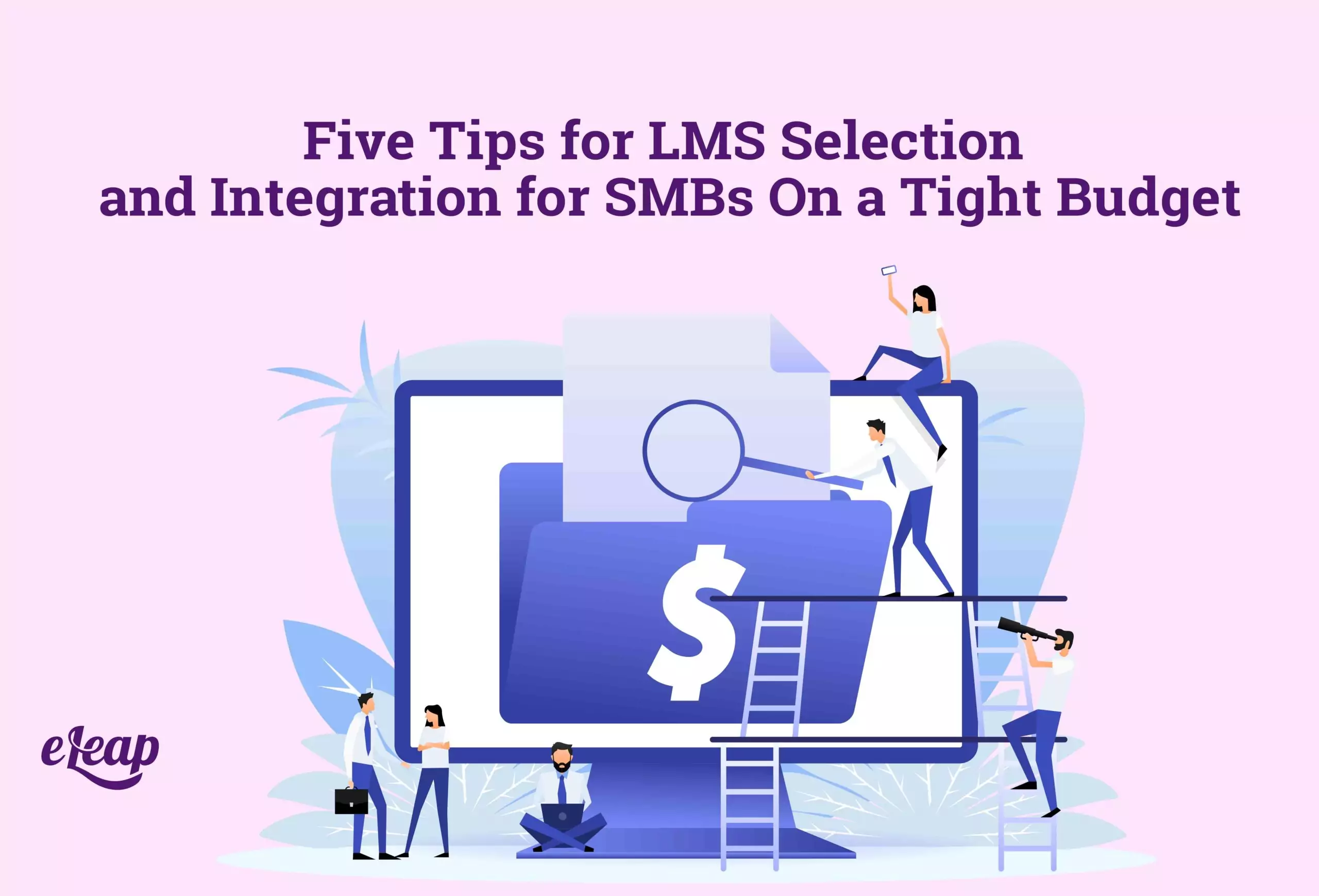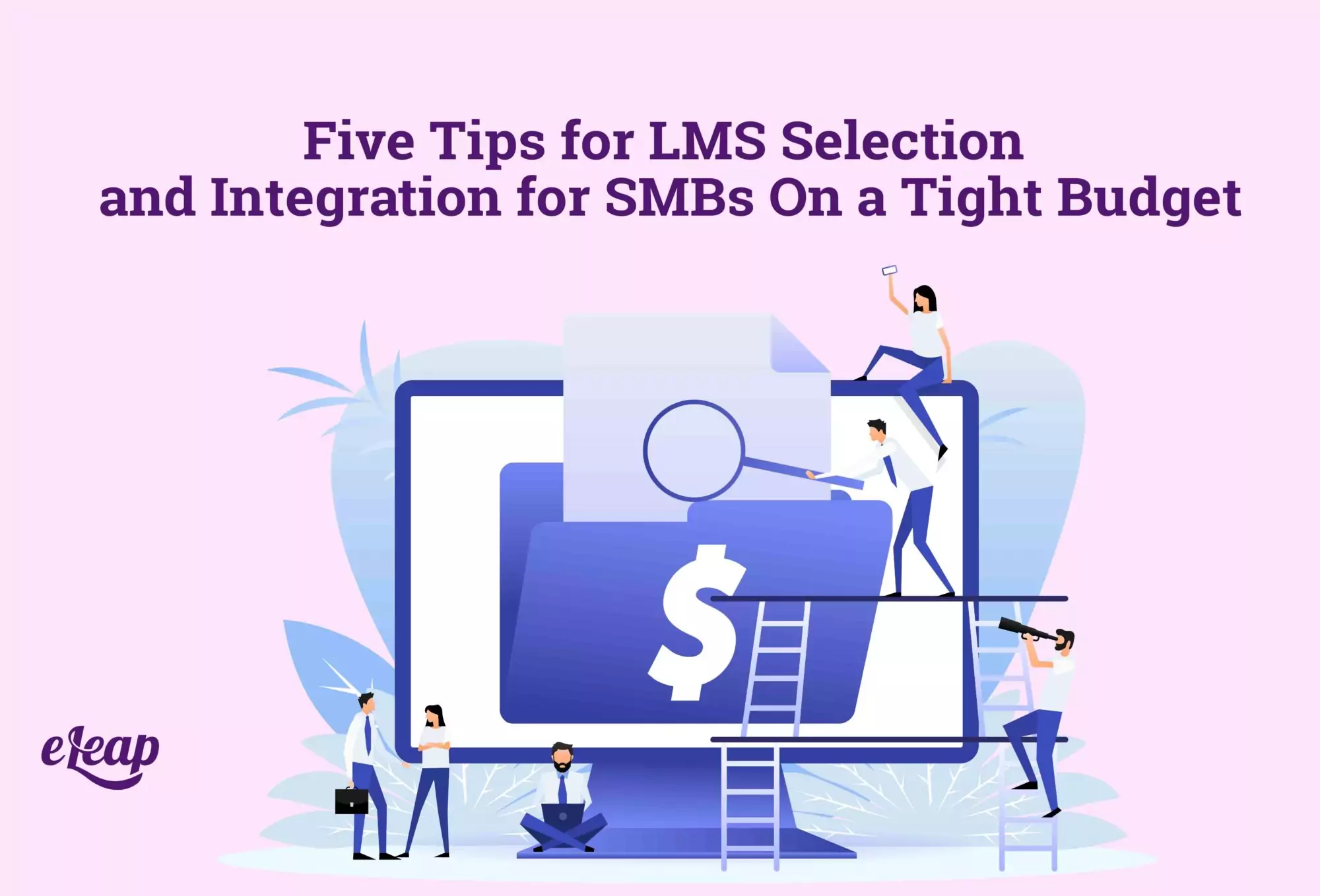Five Tips for LMS Selection and Integration for SMBs On a Tight Budget

While enterprise organizations run to the world of virtual learning with open arms, small businesses aren’t always as quick to jump. A large part of that hesitation comes in one of the greatest conflicts of human nature: the element of choice. There is so much to choose from, so many providers offering the best LMS solutions, and so many costs to consider that it can become overwhelming. That can result in difficulty choosing, or worse, a lack of choice at all.
Although it’s less common, there are still SMBs that feel their budgets are far too tight to utilize an LMS for all that it has to offer. Fortunately, with a little research, most SMBs will realize that isn’t necessarily the case. These five tips can make it easy for any business to integrate an LMS and start embracing all that it has to offer.

Determine the Budget
While your budget isn’t everything, it does play a large role in helping determine what can be spent on an LMS. It isn’t just about what the organization can afford, but what solutions offer the best value for their money. Although high-end customizable platforms generally cost more, they may have special offers for SMBs. Or, you might find a similar platform that’s affordable, even with all the features you thought you couldn’t get.
Set a budget, even if it’s a range, and make sure that it’s the first factor in shopping for a learning management system. Too often, SMBs start looking without thinking about cost and end up falling in love with something way out of their league. Even if it requires a little research to find out what you should be spending, it’ll help you in more ways than you realize.
Develop a List of Core Objectives
Next, it will be important to figure out what the objectives are for having an LMS implemented in the first place. After all, it’s going to be impossible to choose a platform without understanding what it needs to do and offer to both learners and leaders within the organization. Consider how the business will benefit from this solution and what steps can be taken to change L&D for the better using the LMS platform.
Once those objectives are on paper, make sure that they’re refined enough to give direction in choosing an LMS that meets the organization’s needs. Look for something that has all the features and capabilities that you need and consider how much customization can be gotten within your budget.
Leave Room for Growth
This is another important step in the process of selecting an LMS. There must be room for growth. As with most things in today’s business world, agility is key. Choosing an LMS that fits perfectly is a bad choice because it will cost more to replace when change happens. By having an LMS that’s scalable and flexible, organizations will have a much better chance of being able to utilize the platform effectively.
Don’t choose a platform for now. Choose one that will grow and change with your organization so that you are always ready for the next stage of business. Scaling is far more affordable with hosted providers that offer white-label solutions than many people realize.
Don’t Rule Out Customization
As mentioned, being on a budget doesn’t mean that getting customized solutions is no longer an option. It may be an even more important option since paying only for what you need will save money. Organizations need to consider all the options for an LMS and choose a provider that will deliver the solutions they need at the scale and price that fits, too. Custom learning is a must for organizations that are going to keep engaging employees in L&D now and into the future.
Custom learning journeys can help learners retain more knowledge and have a better experience overall. Being able to customize learning modules for specific roles makes training more streamlined and effective. And it’s been proven that today’s employees want nothing to do with the traditional cookie-cutter online or computer-based training that’s been used for decades.
Choose a Platform You Can Integrate
An LMS that’s hosted by a company that knows its way around learning and development is usually the best option. The great thing about these systems is that they’re usually also easy to integrate so there is no need to hire some consultants or tech guys to help everyone make the transition. Even with a limited budget, you’ll find plenty of solutions for an LMS that is easy for the organization to adopt, thanks to the huge market available today.
Migrating to an LMS is a process that takes time, but an organization can do it on its own. In fact, with the solutions available today, it’s a lot easier than it ever has been. When reviewing platforms, make sure that you look at how easy they are to get started so that you don’t get in over your head. Remember to look for white-label options and SMB-focused solutions because the companies that offer these things should be at the top of your list.
Find the Right Fit
Ultimately, it comes down to finding the solution that fits the organization and its employees. Integrating an LMS that everyone hates or that has a terrible design isn’t helping anyone. Updating the LMS with customized solutions and different features will ensure that L&D is delivering at its best and that people are getting the training that they deserve. Why not rely on AI and technology to help create a better learning environment for your team? That’s what it’s there for.
When reviewing the options for an LMS, SMB owners and leaders can utilize this information to help them make an informed choice. There is no right or wrong answer here, either. The best LMS for your business is the one that suits your needs, and that’s the bottom line. Here at eLeaP, we can provide you with the solutions you need to improve your employee training program and garner your results. Go ahead and set up a 30 day free trial today to check out how our system can work for you and your team!